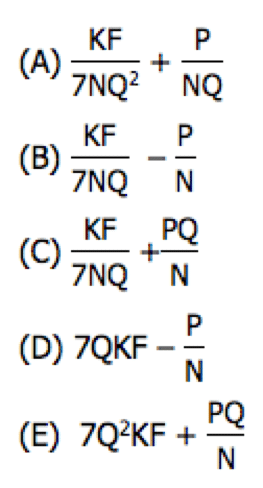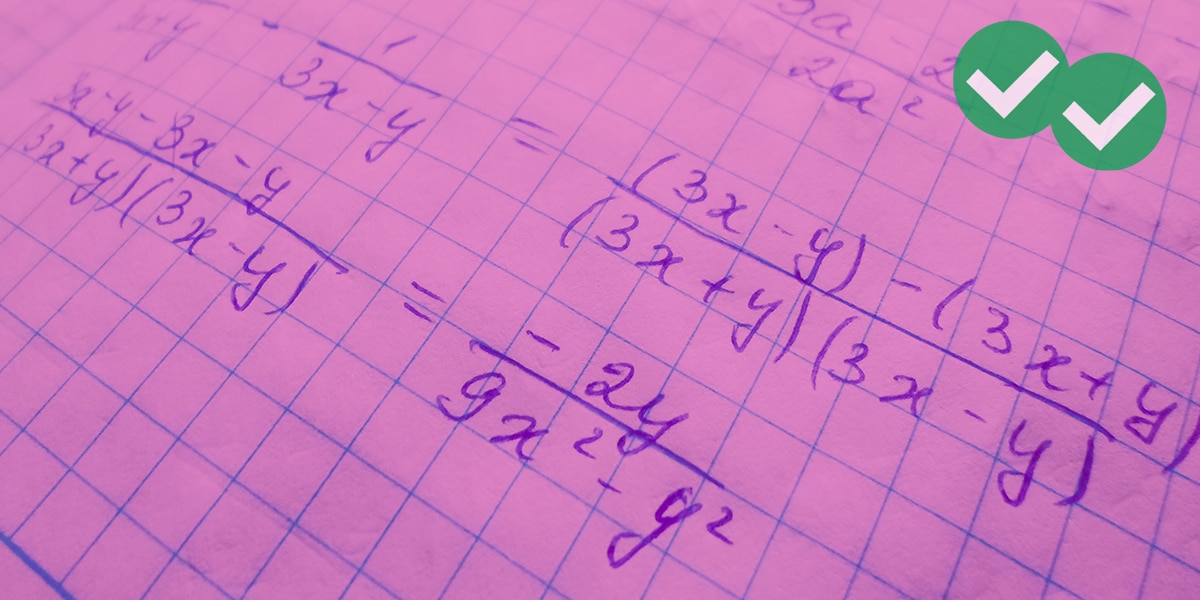
If you are thinking about pursuing an MBA, then either the GMAT, GRE or both will likely factor into the process. To that end, this post aims is to expose you to everything you need to know about the Graduate Management Admissions Test, a.k.a The GMAT. Read on to satisfy all your curiosity about the GMAT, from the skills it tests to how you can achieve an outstanding score. And, when you’re ready, check out our free GMAT practice test!
Table of Contents
What is the GMAT? About the Exam
Why do you Take the GMAT?
Remember the admissions test(s) you took when you were applying to undergraduate programs (likely the SAT or ACT)? Well, the GMAT functions in a similar capacity; it’s the admissions test required when you apply to MBA programs. The vast majority of business schools require a valid GMAT or GRE score. That being said, different schools use and weigh exam scores in different ways. Make sure you do the research! For each program to which you will apply, make sure you track down and make note of their individual policies.
Note: If you’re applying to a non-business graduate program, you almost certainly won’t have to take the GMAT.
What is a CAT?
The GMAT is a computer adaptive test (CAT). On a CAT, the level of difficulty of the questions adapts to your performance. The first question is always a medium-difficulty question. If you answer it correctly, your next question will be more difficult and worth more points. If you answer the first question incorrectly, your next question will be less difficult and worth fewer points. The process continues throughout the test: Correct answers open the door to more difficult questions. Incorrect answers lead to easier questions.
Within a section, you are not allowed to skip around. Questions appear on your computer screen one at a time. You must answer and confirm your answer before you can move forward to the next question. This has definite consequences for you as a test taker! Although you are allowed to mark questions for review, you’re only allowed to change the answers for a maximum of just three questions, and you aren’t allowed to make any changes until you’ve completed the entire section. Note! There is no additional review time. If you are going to review the questions you’ve marked and possibly make changes, you must have time remaining for the section to do so.
In the end, thanks to the CAT format and algorithm, your final score will based on the number of questions you answer correctly and the difficulty level those questions.
How and When Do You Take the GMAT?
Here’s what you need to know:
- To take the exam, you’ll need to register on the official GMAC website.
- Cost: Currently, in most of the world, the cost is $275 (USD) at a test center or $300 online. Because prices vary depending on your location, it’s always good to check with “the official source” for details.
- Test Dates: There are a number of in-person options, but many students opt to take the GMAT online, at-home. Word to the wise: Whether you take the exam in-person or at-home, popular days and times for testing slots can still fill up. Seats in the centers and available remote proctors are finite resources, which means there are limits to how many test-takers can sign up at any given time. To secure your ideal time slot, you should schedule your test dates well in advance.
Can You Retake the GMAT?
Yes, yes you can! However, seriously consider whether you should retake it. The policy allows you to retake it any time after a sixteen-day period following your exam. After that, you can retake it as many as five times in twelve months, but you cannot take it more than eight times in a lifetime.
What Does the GMAT Evaluate?
While at first glance, the test may appear to contain a motley collection of questions, there is most definitely a method to the madness! Take it from GMAC, which explains that the focus is on evaluating your reasoning and analysis skills.
These skills will be tested in a in a variety of ways:
- Your data analysis skills
- Your quantitative reasoning skills
- Your verbal reasoning skills.
What is the Format and Timing of the GMAT?
Section Breakdown
Here’s a nice bit of information about the sections: You get to choose the order in which you will take them on exam day 😁
Data Insights (DI) Section
The Data Insights section is set up to test higher-order reasoning. This includes questions about the integration of information (organizing, synthesizing), evaluating information (tradeoffs and benefits of different actions), making inferences from data (and predictions), relating information to other data, and strategizing based on data provided.
You’ll have 20 questions to answer in 45 minutes. Keep in mind that these are often complex, multi-part questions. A big part of mastering DI depends on your ability to master the timing.
These 20 questions will each be one of five types:
- Graphics Interpretation (GI): 20-30%
- Two-Part Analysis (2PA): 10-20%
- Table Analysis (TA): 10-20%
- Multi-Source Reasoning (MSR): 10-20%
- Data Sufficiency (DS): 20-40%
Quantitative Reasoning (Quant) Section
For Math, you’ll answer 21 questions in 45 minutes, giving you slightly over two minutes per question (but remember, you need to actually select the right answer and wait for the next screen to load! So let’s say two minutes). Within Quant, you’ll encounter just one type of question:
- Problem Solving
Math Section Concepts
You may have heard rumors about the difficulty of the math section, or maybe you’ve tried out a few problems yourself and been bowled over by the high-level thinking they require. But one thing you won’t have encountered is any concept beyond high-school level math.
Strange, but true: the GMAC knows that there are humanities majors among us who may not have thought about calculus integrals in years…and even then, only under duress (that last one may be just me). So instead, the exam tests quantitative reasoning (notice a pattern here?) by piling relatively simple concepts on top of each other to create multi-level problems.
So yes, you should review the following areas before test day:
- Arithmetic
- Number properties
- Pre-algebra
- Algebra
- Word problems
But, in addition to that review, you should spend the majority of your Quant study time focusing on practice problems and practice tests, because although the concepts aren’t that tricky, the way they’re tested can be pretty tricky indeed.
Verbal Reasoning Section
The Verbal section is 45 minutes long; during those 45 minutes, you’ll encounter 23 multiple-choice questions.
Verbal Section Concepts
There are two question types on the Verbal Section: Reading Comprehension (RC) and Critical Reasoning (CR).
These two types will be roughly evenly distributed.
- Reading Comprehension questions give you a short (200-300 words) or long (300-400 words) passage, then ask you about what you’ve read with three or four multiple-choice questions, respectively.
- Critical Reasoning questions set forth an argument that you then analyze. There are eight different types of CR questions, which you can read about in the above post, all of which are multiple choice, with five answer choices.
How Much Does the GMAT Matter?
The short answer: It matters a whole heck of a lot! The GMAT is a major factor in MBA program admissions, especially at the top schools. So, what’s a good score? As a rule of thumb, a good score is 615+ on the new GMAT and 645+ on the old GMAT. A great score is 685+ on the new and 720+ on the old.
The importance of the score makes strong prep essential and worth the time and energy; good scores are essential if you want to get into a top MBA program. A great score will help you stand out!
Scoring
GMAT scoring varies depending on the section. Here’s a quick summary:
- Data Insights: 60-90
- Quant: 60-90
- Verbal: 60-90
- “Total” (i.e. scaled score of all of the above): 205-805
Percentiles
A percentile describes the percentage of test takers who scored lower than you did on the exam. This is particularly important in helping you contextualize your scores. After all, knowing your GMAT percentile can help you evaluate how close you are to getting into the school of your dreams.
First of all, a few things to know about GMAT scores: They changed in 2023 when GMAC updated the exam. It’s very important to understand that old scores (200-800 scale) cannot be directly compared to new scores (205-805 scale). Again, this is where percentiles come into play. For information about score comparisons, check out the video below.
Preparing for the GMAT
Prepping for the exam is important. Not only is there immense time pressure, which preparing can help you deal with, but the problem formats can be downright confusing (Data Sufficiency, anyone?) if you’ve never seen them before.
Basically, if you’re serious about business school, you should be serious about test prep. While not the only admissions criterion, your score on the GMAT can be the difference between you getting accepted or rejected from your target MBA school.
That being said, a great or even perfect score cannot guarantee your admission into business schools. In addition to your score, your work experience, essays, recommendations, and interview are all factors that contribute to your acceptance or rejection from a business school.
Check out these resources to learn about the best way to prepare for the GMAT and what materials to use:
- Start with our guide to how to prepare for the GMAT
- If you’re deciding between prep options, check out our comparison of the Best GMAT Prep Courses
- Pick the study plan that fits your needs from our free GMAT study schedules.
- Learn how to keep an error log (with template)
Resources and Next Steps
The GMAT can be overwhelming, but it can also be a great opportunity to sharpen your reasoning skills, focus your ambitions, and prepare yourself for the business world. With the right resources and the right strategy, you can master this “extraordinarily challenging” test and get a score you can be proud of.
But with all that said, if your first foray into GMAT practice has you a little freaked out, that’s okay! There are a ton of free resources right here on the Magoosh GMAT Blog to help you prepare for the exam. For example:
- A Free GMAT Practice Test, which you can use as a diagnostic.
- Free GMAT Math Flashcard App so you can study anywhere you bring your phone.
- Free Video Lessons from Magoosh’s premium GMAT prep.
- Finally, check out our Zen Boot Camp for the GMAT. Particularly if you’re scoring high already—but not quite high enough—mastering the mental game is crucial!
These resources will give you a great grounding in what the exam looks like, how to study for it, and the concepts that you’ll see on test day!
- Getting a great GMAT score does take lots of preparation, and for a truly tailored approach, let me make a suggestion. After you’ve worked through free resources, try out Magoosh GMAT prep!
You’ve reached the end of this post! Give yourself a well-deserved pat on the back, then leave us a comment with any questions or comments you still have. Happy Studying!







Leave a Reply